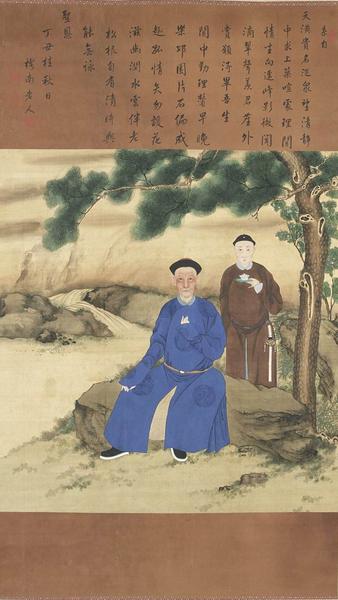
Yunxi
| Name | Yunxi |
| Title | Kangxi Emperor's 21st surviving son and the first Prince Shen of the Second Rank |
| Gender | Male |
| Birthday | 1711-02-27 |
| nationality | Qing dynasty |
| Source | https://www.wikidata.org/wiki/Q7361731 |
| pptrace | View Family Tree |
| LastUpdate | 2025-10-27T03:40:59.331Z |
Introduction
Yunxi (允禧; February 27, 1711 – June 26, 1758) was a prince of the Qing Dynasty and a son of the Kangxi Emperor. He held the title of Prince Shen of the Second Rank. He was the 21st surviving son of Kangxi and his mother was Lady Chen, also known as Noble Lady Qian. In 1722, his mother was promoted to concubine Xi.
Yunxi was born in 1711 and belonged to the "hong" generation, being born in the same year as the Qianlong Emperor. Throughout his life, Yunxi was recognized for his talent in arts and his study diligence. Most of his paintings employed the Gongbi technique and were influenced by the schools of Dong Yuan and Wen Zhengming, prominent Ming dynasty artists. His artworks extended beyond monochrome palettes, notably exemplified in the painting "Wind in Ten Thousand Pine Gully." His skill in painting was highly regarded within the imperial court, and he maintained associations with court artists such as Giuseppe Castiglione and Zheng Xie. Yunxi also interacted with Taoist priests and Buddhist monks, engaging in meditation practices, which was reflected in his paintings through depictions of Taoist monks in purple robes. He was also involved in poetry, composing works including a cycle titled "Poetry from Huajian Hall."
In terms of political and military career, Yunxi maintained a low profile during the succession struggles among his brothers, largely due to his young age at the time. He was granted the title of Prince of the Fourth Rank in 1730 and was promoted to Prince of the Third Rank in the same year. In 1735, the Qianlong Emperor awarded him the title of Prince Shen of the Second Rank, appointing him as a commander of Han Chinese Plain Yellow Banner forces. The emperor praised his literary talents, administrative abilities, and management of banner affairs, indicating that Yunxi was considered suitable for the princely title.
Yunxi remained neutral during the Coup of Hongxi, despite one of his brothers being implicated. He served in an official capacity within the Ministry of Revenue. In 1748, his princely seal was stolen and subsequently sold by a merchant in Jiangxi, an incident noted by historian Mark Peter St. Nicholas as a case of forgery prevalent during the Qing Dynasty.
Yunxi died on June 26, 1758, and was posthumously honored with the title Prince Shenjing of the Second Rank, which described him as "prudent and tranquil."
His courtesy name was Qianzhai (谦斋), meaning "amiable student." His art names included Ziqiong daoren (紫琼道人), meaning "purple jade monk," and Chunfu Jiushi (春浮居士), meaning "Spring-like pure scholar."
Yunxi was married to Lady Zugiya, the daughter of Jianqi, a fourth-rank military official. The marriage was initially reluctant, but it was finalized in 1732, five years after the selection process. Lady Zugiya was designated as Princess Consort of the Fourth Rank and received subsequent titles reflecting her husband's noble progression, culminating in Princess Consort Shen of the Second Rank.
Yunxi's children included a daughter born in 1733, who later married Jaisang Dorji of the Khalkha Borjigin clan. His sons included Hongxun (1731–1749) and Hong'ang (1728–1742), both of whom died young, and a second daughter who married Gumu of the Khorchin Borjigin clan. After Yunxi's death, his adoptive grandson Yongrong succeeded him, and the princely peerage was renamed to Prince Zhi of the Second Rank, later elevated to the first rank.
References include historical records related to Qing dynasty nobility, art, and court life.
Family Tree
Tap to expand more relatives